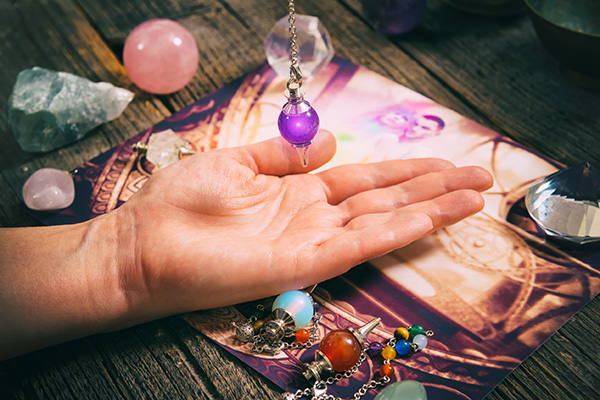reading
How To Get The Most Out Of Your Psychic Reading
 A reading with one of our talented psychics or mediums can offer you profound insight, guidance, clarity and healing, whether you’re seeking answers to pressing questions, making life decisions or exploring future possibilities.
A reading with one of our talented psychics or mediums can offer you profound insight, guidance, clarity and healing, whether you’re seeking answers to pressing questions, making life decisions or exploring future possibilities.
To maximize the experience, it is good to approach your reading with an open mind, clear intentions, and practical considerations. Here are some tips to ensure a meaningful and enriching session with our expert team of psychic readers:
Choose The Right Psychic
The first step is to find a psychic who will work best with you. Different psychics have different reading styles, specialties, and professional experience. Research their backgrounds, read reviews, and consider recommendations from trusted friends or online communities. A psychic whose style and approach matches your needs will enhance your experience and foster a stronger connection.
At PsychicAccess.com, we make this selection process easier for new clients by providing you with a detailed profile description, an introductory video, and their complete archive of reviews from other clients, as well as a free 6-minute trial reading with an available psychic of your choice. Why do we offer new clients a free introductory reading? Because we know you are going to love the psychics on our team!
Becoming a member of the Psychic Access team is not easy. We are very selective and only accept the best of the best to join our team. On average, only one in eight applicants make it to the interview stage, and out of that short list, only one in twenty are hired to offer readings on our platform.
Transform Your Life With Akashic Healing
 Exploring my own Akashic record was a profoundly healing and enlightening experience. By accessing this information, I was able to uncover deep-rooted karmic patterns that spanned across lifetimes. Discovering the origins of these patterns helped me understand why certain fears and emotional blockages existed in my present life.
Exploring my own Akashic record was a profoundly healing and enlightening experience. By accessing this information, I was able to uncover deep-rooted karmic patterns that spanned across lifetimes. Discovering the origins of these patterns helped me understand why certain fears and emotional blockages existed in my present life.
For example, one major discovery I made was the origin of a lingering fear of abandonment and persecution that I could not attribute to anything that had happened in my current lifetime.
By delving into my Akashic record, I uncovered past life memories of being persecuted as a witch and burned alive at the stake, which had left an indelible imprint on my soul memory. Although this discovery was painful, it gave me the clarity I needed to heal those karmic wounds.
The Akashic Records are a metaphysical “library” or energetic “database” that contains all the information about our soul’s journey across lifetimes. The Akasha holds records of every thought, action, emotion and experience our soul has ever had. It is part of the collective consciousness or universal memory that transcends time and space, and by tapping into this archived metaphysical information, one can gain insight into one’s past lives, current life situations, and potential future paths.
The term “Akasha” comes from the Sanskrit word for “ether” or “sky” and refers to the source energy or creative life force that permeates the entire universe. In Hinduism and Buddhism, Akasha is traditionally seen as the primary substance from which all things are formed and is considered the fifth element, along with earth, water, fire, and air.
The Ancient Art Of Facial Reading
 Physiognomy is an ancient belief system that the face reveals the hidden truths of the mind, body, and spirit. In many cultures, the face is seen as a reflection of the soul or inner self.
Physiognomy is an ancient belief system that the face reveals the hidden truths of the mind, body, and spirit. In many cultures, the face is seen as a reflection of the soul or inner self.
This belief that a person’s physical characteristics, such as the shape of their face, eyes, or nose, can reveal something about their inner nature has roots in various ancient cultures and has been practiced for thousands of years. In some esoteric traditions, facial characteristics are believed to also reveal past life influences and karmic imprints.
The face is more than just a reflection of our emotions; it is a map of our physical health, life experiences, and even our spiritual state. By observing our facial features and learning to interpret their subtle messages, we can gain valuable insights into our health and well-being.
One of the earliest and most detailed systems of face reading comes from Traditional Chinese Medicine (TCM). Chinese face reading, or Mian Xiang, dates back more than 3,000 years. Practitioners view the human face as a map of a person’s life, health, and destiny. They divide the face into different areas, each corresponding to different internal organs and emotional states. Facial analysis is used to diagnose imbalances in the body and mind.
Physiognomy was also practiced in ancient Greece. The philosopher Aristotle (384-322 BC) wrote about it, arguing that certain facial features could indicate personality traits and that there was a connection between a person’s appearance and their character. Greek scholars believed that external features, such as facial structure, could provide insight into a person’s moral and psychological makeup.
The Principles Of Ethical Psychic Reading
 When I first began working as a professional psychic, both my guides and human mentors impressed upon me the importance of remaining ethical in my practice.
When I first began working as a professional psychic, both my guides and human mentors impressed upon me the importance of remaining ethical in my practice.
Ethical psychic reading is crucial because it not only maintains the integrity of our field of work, but it is also builds trust with the people who need our support and guidance the most.
People don’t contact a psychic when life is good. Our clients only seek psychic guidance when they are struggling, confused, or facing important life decisions, making them vulnerable and susceptible to influence and manipulation.
Ethical psychic readers respect the mental, emotional, and spiritual well-being of their clients and provide honest, compassionate, and sincere guidance. Ethical psychic practices also ensure that the psychic reader does not make false claims, guarantees, or predictions that could mislead or cause harm.
Adherence to ethical standards and spiritual values protects both clients and readers by fostering a positive and supportive environment in which people can explore their concerns and seek clarity without fear of deception or harm.
I vividly remember a young woman who came to me many years ago desperate to become a mother. She had no children at the time, and she especially wanted a daughter. She told me that if I could see a baby girl in her future, she would be more than happy to pay me extra money for my services.
The Mystical Art Of Pendulum Divination
 Divination, the ancient spiritual practice of seeking knowledge of the future and the unknown through supernatural means, has been an integral part of human history for millennia.
Divination, the ancient spiritual practice of seeking knowledge of the future and the unknown through supernatural means, has been an integral part of human history for millennia.
From the casting of lots practiced in various forms by indigenous and aboriginal cultures around the world using bones, stones, shells, and other natural objects, to the Tarot of 15th century Europe, to today’s cyber-divination and AI-powered fortune-telling, various tools have been used to connect with the spirit realm and uncover one’s destiny.
Among these tools, one of the most accessible and easy-to-use traditional methods of divination is the pendulum. The best part is that this simple yet powerful tool is already within reach, tucked away in your jewelry box or craft kit.
A pendulum is simply a weighted object attached to a chain, string, or cord. It can be as elaborate or as simple as you like – a crystal dangling from a silver chain, a beloved piece of jewelry, or even a simple stone tied to a piece of string. The key is to choose an object with some weight to it so that it will swing freely when held aloft.
Pendulum divination is a form of dowsing, a practice that dates back thousands of years and has been used to locate water, minerals, and even lost objects. Dowsing works by tapping into the subconscious mind, which is connected to universal consciousness and the spirit realm. When using a pendulum for divination, you are essentially asking your subconscious to communicate with you through the movements of the pendulum.
Is Your Texting Pushing Him Away?
 A new client recently contacted me about a promising romantic relationship. The first thing that became clear as I began to read for her was that she had a long history of dating men who seemed like potential long-term partners, but then suddenly disappeared or broke up with her after only a few months.
A new client recently contacted me about a promising romantic relationship. The first thing that became clear as I began to read for her was that she had a long history of dating men who seemed like potential long-term partners, but then suddenly disappeared or broke up with her after only a few months.
It quickly also became clear to me that texting was a significant factor in her dating problems. Misunderstandings due to texting have damaged the romantic, family, and friendship relationships of many people I have worked with as a psychic professional. This client was no exception.
As I read the energy around her situation, I sensed that she had a tendency to push men away by unnecessarily panicking when she did not feel completely in control. Guys can sense panic and controlling tendencies and for most men this is usually a big turnoff.
This kind of negative energy is also stressful and doesn’t improve the outcome of an uncertain situation. Excessive obsession, panic, and worry will not bring someone closer to you; in fact, it can push a potential long-term relationship away forever.
I then had to tell her that while I did see the potential for a long-term relationship in their connection, I didn’t currently see a long-term future for them if she continued with all the texting she was doing. I told her to take a step back, breathe, stop worrying so much, and definitely not try to resolve things through texting any more.
